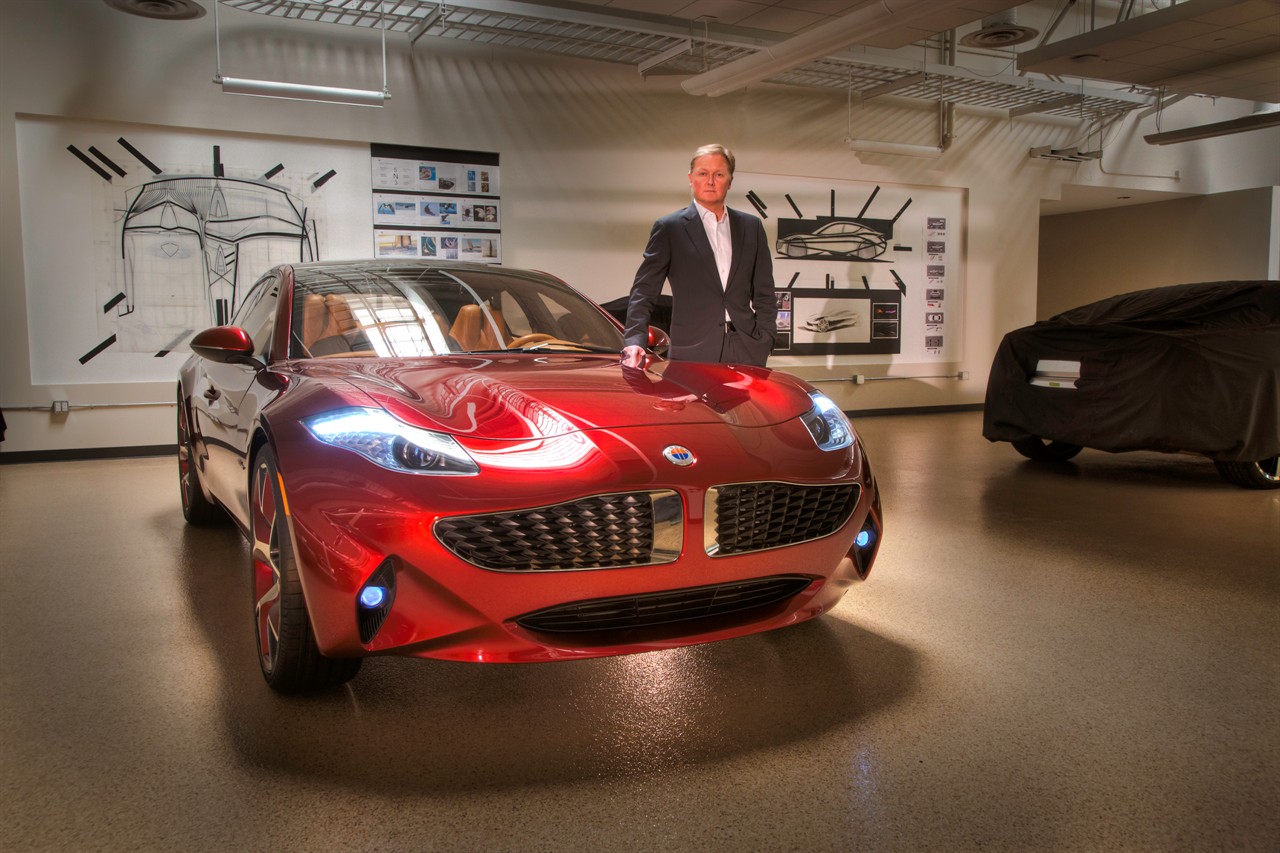Buyers Circle Around Ailing Fisker Automotive
Electric car company Fisker Automotive appears to have found the deep pockets it needs.

CEO Tony Posawatz, who joined the Anaheim, Calif.-based company last year from General Motors, has said Fisker is seeking a “partner” that can provide the capital to restart production and build its second car, a sedan with an extended-range electric powertrain.
Now Fisker is reportedly weighing several bids, including one from Chinese state-owned company Dongfeng and Chinese conglomerate Geely, which bought Volvo and its plug-in electric vehicle technology from Ford. A Bloomberg report says Dongfeng has offered $350 million to buy about 85 percent of Fisker Automotive, which would be a fraction of what the company was valued at a few years ago.
That Fisker needs to find outside buyer is not surprising to company watchers. The company has had a number of setbacks, including delays and production problems bringing out its Karma, a plug-in electric luxury sports car. Fisker had to stop making the Karma last year because its battery supplier, A123 Systems, went bankrupt.
But the fact that potential buyers are from China is already raising alarms about Fisker, which raised $1.2 billion in venture capital and spent about $192 million in federal loans to build a factory. “Technology developed with American taxpayer subsidies should not be sold off to China,” Republican senator Charles Grassley told Bloomberg. He compared it to the acquisition of A123 Systems by China-based auto parts company Wanxiang Group.
As U.S.-based energy startups have struggled to find funding, Asian conglomerates have been actively buying up assets of bankrupt companies or investing in still-promising startups. Chinese energy project developer Hanergy, for example, last year bought once-ambitious thin-film solar startup Miasole for a mere $30 million.
This will likely continue because Chinese conglomerates, in particular, think they can get good deals, says Zhuo Zhang, a China analyst at Lux Research. In China, electric vehicles are considered a strategic technology in the long term to lower oil use and improve air quality, say observers.
“Growing wisdom inside China is that there is value in picking up the pieces left behind in the U.S. by the combination of government and venture capital largesse,” Zhang says in a research note today. “With the ability to manufacture efficiently, fund consistently and drive adoption of emerging technologies unencumbered by U.S. partisan paralysis, China could extract gold from U.S. investment garbage.”
The trend is not isolated to China, though. Venture investor Josh Wolfe at Lux Capital says that, unlike public U.S. companies, he has seen Asian companies be willing to invest in long-term research and development, which has attracted them to U.S.-based technology companies. “There’s a higher appreciation for primacy of U.S. technologies from overseas companies,” he told me while I was reporting a story on A123 Systems.
At the same time, there are a few examples of energy startups that have managed to grow from product development to manufacturing without needing to be sold at a discount.
Fisker Automotive stumbled in bringing the Karma to market and it has yet to start making the Atlantic, a plug-in electric sedan expected to be priced at about $55,000. The Department of Energy made a loan available to convert a GM factory in Delaware to make the Atlantic, but it stopped making the loan available when Fisker didn’t meet specific business targets.
By contrast, Tesla Motors, which also received a DOE loan to build its factory, is crossing into higher volume production. Yesterday, Tesla announced that it expects to be profitable this quarter and is making its Model S at a rate of 400 a week, which will allow it to hit its annual target and meet demand for the electric sedan. (See, Tesla’s Explosive Revenue Suggests a Bright Future.)
One crucial difference between Tesla and Fisker, which is well known for its bold designs, has been Tesla’s manufacturing expertise. Fisker may well still go public and be a successful EV supplier. But for energy-related startups to go the route of Tesla rather than Fisker, they’ll need innovative technology, access to capital, supportive policies, and great business execution.
Keep Reading
Most Popular
How scientists traced a mysterious covid case back to six toilets
When wastewater surveillance turns into a hunt for a single infected individual, the ethics get tricky.
The problem with plug-in hybrids? Their drivers.
Plug-in hybrids are often sold as a transition to EVs, but new data from Europe shows we’re still underestimating the emissions they produce.
What’s next for generative video
OpenAI's Sora has raised the bar for AI moviemaking. Here are four things to bear in mind as we wrap our heads around what's coming.
Stay connected
Get the latest updates from
MIT Technology Review
Discover special offers, top stories, upcoming events, and more.